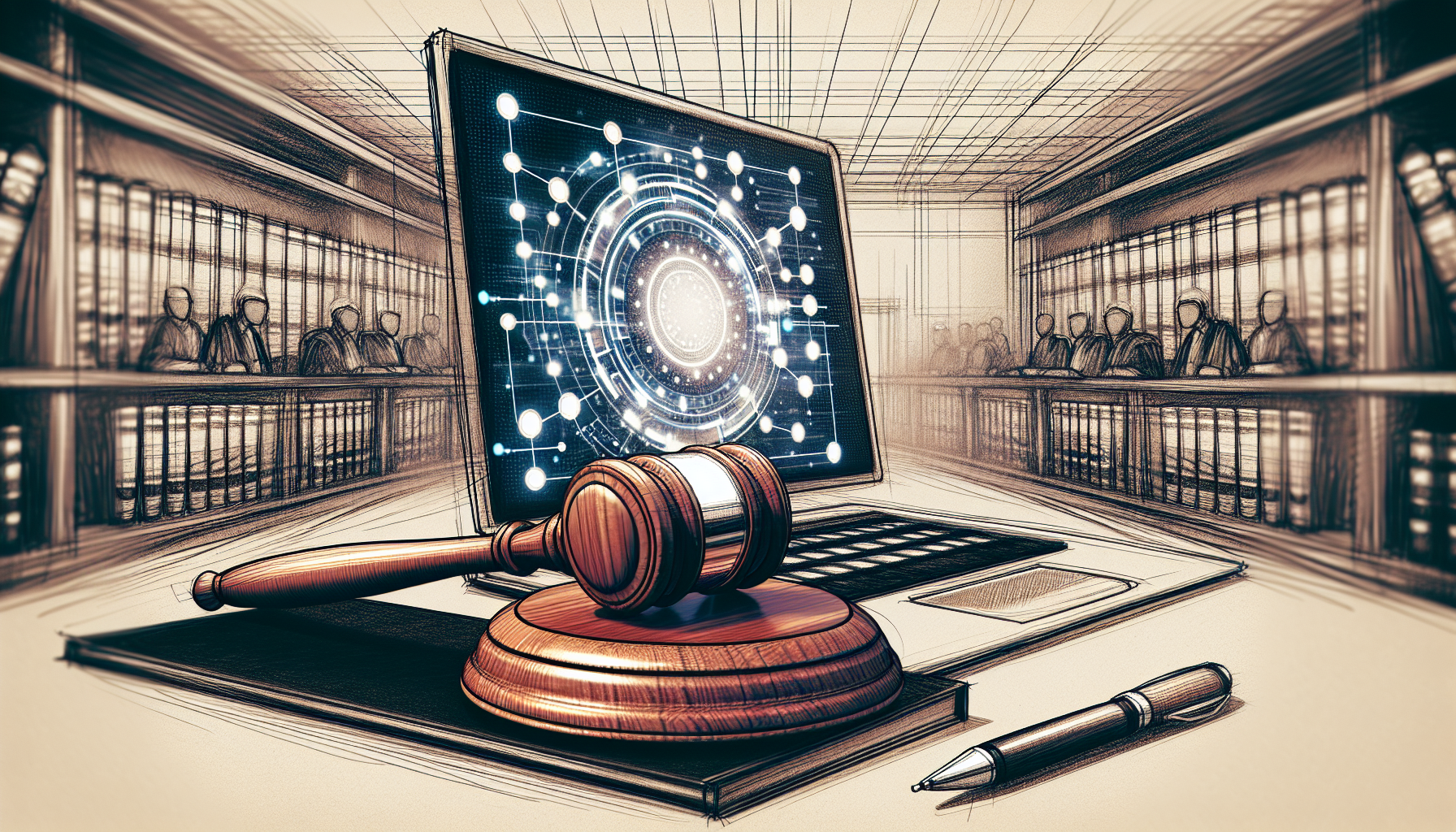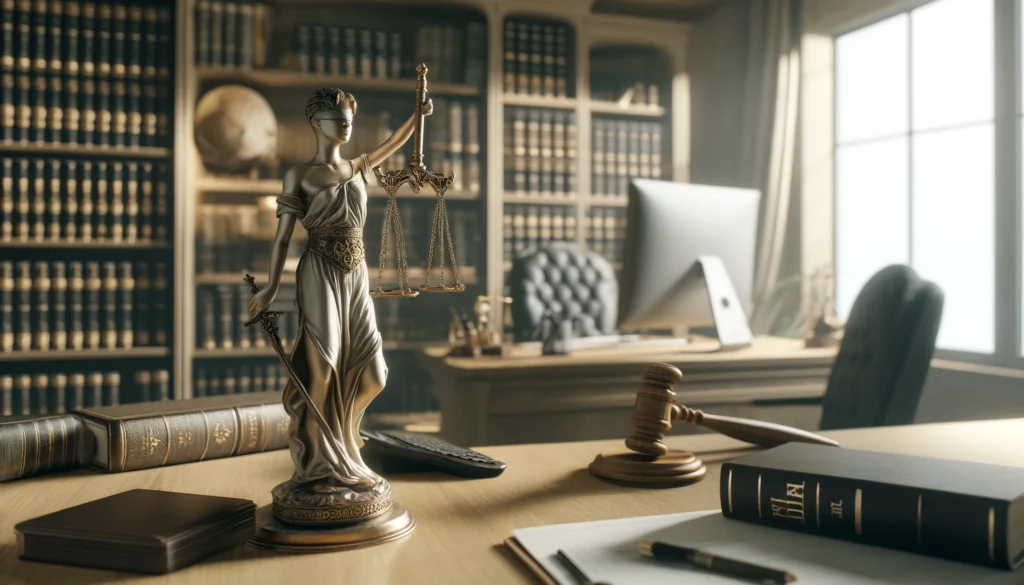
Opening the Legal Toolbox: Embracing AI in Legal Practice
In an era where technology pervades every facet of our lives, the legal profession is no exception. AI-powered tools are increasingly becoming indispensable in the legal world, providing practitioners with innovative solutions to streamline their work. One standout application of AI is ChatGPT, an advanced language model developed by OpenAI. This tool presents a unique opportunity for legal professionals, particularly when drafting responses to prosecutorial motions in criminal cases.
Leveraging ChatGPT can enhance efficiency and accuracy, aiding attorneys and paralegals in navigating the intricate landscape of legal documentation. Let’s explore how this technology is revolutionizing paralegal assistance, the art of prompt engineering, and the ethical considerations crucial to maintaining professional integrity.
Legal Aid: How ChatGPT is Revolutionizing Paralegal Assistance
ChatGPT’s transformative impact on paralegal tasks cannot be overstated. This AI tool streamlines the often labor-intensive process of drafting, reviewing, and refining legal documents. By automating routine tasks, ChatGPT allows paralegals to focus on more strategic elements of their work.
- Time-Saving: ChatGPT can generate initial drafts of responses to prosecutorial motions in mere minutes, significantly reducing the hours traditionally spent on this task.
- Enhanced Accuracy: The AI model’s ability to process vast amounts of legal text ensures a higher degree of precision and consistency in the generated content.
The synergy of human expertise and AI efficiency yields documents that are both thorough and punctual, ultimately benefiting clients by ensuring timely and accurate legal responses. As we delve deeper into the mechanics of using ChatGPT, understanding how to craft effective prompts is paramount.
Also read:
Prompt Engineering 101: Crafting Effective Queries for Legal Responses
At the heart of utilizing ChatGPT is the art of prompt engineering. Effective prompts are crucial to extracting high-quality responses from the AI. Developing well-crafted queries requires attention to detail and an understanding of the case specifics.
Consider these examples to illustrate effective prompt crafting:
- Example 1: “Generate a response to a motion to suppress evidence in a case where the defendant was not read their Miranda rights during arrest. Reference relevant case law and statutes.”
- Example 2: “Draft a counterargument to a motion for summary judgment in a theft case where the defendant has an alibi supported by multiple witnesses.”
When refining prompts, specificity is key:
- Clearly define the legal issue.
- Include pertinent case details and context.
- Request references to relevant statutes and case law.
Iterative refinement of prompts will enhance the output quality, ensuring the AI’s responses are tailored to the specific legal context. With these foundations, we can further tailor responses to align with nuanced case details.
Also read:
Nuanced Insight: Tailoring AI Responses to Specific Case Details
For ChatGPT to generate highly relevant responses, it’s imperative to provide detailed input reflecting the case’s nuances. Customizing AI-generated content ensures the final draft aligns with the unique aspects of each case.
Effective techniques include:
- Detailed Context: When supplying initial prompts, incorporate all relevant facts, evidence, and legal context.
- Sequential Queries: Use a series of related prompts to build upon the AI’s previous responses, gradually adding depth and specificity.
These methods not only enhance relevance but also ensure that the final output is comprehensive and closely aligned with the case specifics. For a more profound analysis, we can leverage follow-up prompts and contextual memory.
Also read:
Advanced Techniques: Leveraging Contextual Memory and Follow-Up Prompts
Maintaining context during extended interactions with ChatGPT is vital for nuanced and coherent legal document drafting. Follow-up prompts enable deeper dives into specific areas of interest.
For instance:
- Initial Prompt: “Outline the primary arguments for opposing a motion to dismiss based on alleged failure to state a claim in a fraud case.”
- Follow-Up Prompt: “Expand on the argument regarding misrepresentation, providing case precedents and statutory references.”
These follow-up interactions help refine arguments and maintain consistency across various drafts, ultimately leading to a more polished and well-supported legal document. However, despite the advanced capabilities of AI, ensuring the accuracy of its output remains critical.
Also read:
Ensuring Accuracy: Verifying AI-Generated Content
While ChatGPT offers substantial automation benefits, human oversight is indispensable to verify the accuracy and relevancy of AI-generated content. Legal professionals must cross-reference the AI’s responses with reputable legal resources and case law.
Steps for verification include:
- Reviewing AI-generated content against current legal standards and statutes.
- Correcting any inaccuracies or misinterpretations of the law.
- Ensuring the final draft reflects professional legal writing standards.
This diligence ensures that the responses are not only accurate but also uphold the legal profession’s integrity. Moving forward, ethical considerations play a crucial role in integrating AI into legal work.
Also read:
Ethical Boundaries: Navigating AI Contributions in Legal Work
Integrating AI into legal work involves navigating ethical boundaries, ensuring the technology complements rather than overshadows human expertise. Protecting client confidentiality and data integrity is paramount.
Legal professionals must remain vigilant about the ethical implications of relying on AI and ensure that AI-generated content adheres to ethical guidelines and privacy standards. As we discuss maximizing efficiency, practical tips for integrating ChatGPT into daily tasks will be explored.
Also read:
Maximizing Efficiency: Practical Tips for Daily Use
Incorporating ChatGPT into everyday paralegal tasks requires strategic planning to maximize efficiency and productivity. Consider the following practical tips:
- Streamline Workflow: Use ChatGPT for initial drafts of routine documents and responses.
- Reduce Redundancy: Utilize templates enhanced by AI to minimize repetitive tasks.
- Enhance Collaboration: Integrate AI-generated drafts into collaborative platforms for seamless team reviews and edits.
These approaches ensure that AI acts as a supportive tool, enhancing workflow without replacing the critical thinking and expertise that legal professionals bring to their work. As we conclude, let’s focus on the future of AI in legal practice.
Also read:
Conclusion: Future-Ready Paralegal Assistance
In summary, the integration of ChatGPT into legal practices marks a significant advancement in paralegal assistance. By embracing AI, legal professionals can enhance efficiency, accuracy, and overall productivity while maintaining the highest ethical standards. As AI technology continues to evolve, its role in legal work will undoubtedly expand, paving the way for more innovative and effective legal practices.
The future of paralegal assistance is bright, with AI standing as a powerful ally in the quest for justice and excellence in legal practice.


